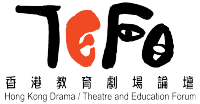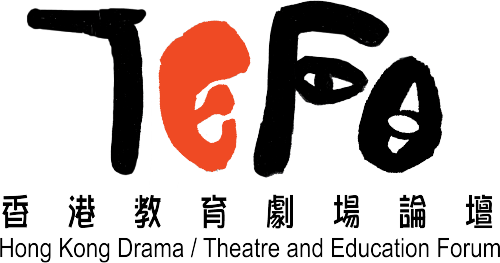Tag: Aesthetics
An Alternative Path: A Physical and Metaphorical Group-devised Ethnodrama | DaTEAsia Vol. 7
Graffitopia is a group-devised ethnodrama on the lives of twelve children aged 6 to 12 of different family and socio-economical backgrounds in Hong Kong. It was performed in May 2015 in the Hong Kong Cultural Centre, a public performance venue. In this paper, using Graftopia as a case study, we discuss how researcher-devisingperformers (RDPs) embody, transform and present ethnographic data in the creative process of an ethnodrama, and how such process deepens the RDPs’ understanding of the informants, themselves as well as the devising methodology and aesthetics of ethnodrama. The devising process of the eight RDPs were recorded and studied, and small-group interviews with all the RDPs were conducted towards the last stage of the rehearsal process to investigate their experience and moments of discoveries throughout the creative process. It has been found that the physical, stylised, metaphorical, and reflective devising process and performing style generated an aesthetic space for the RDPs to build not only their understanding of the ethnographic data, but also a strong connection between the RDPs’ selves and the children’s lived experience. Such aesthetic space is crucial to the transformative power, authenticity, research purposes, educational and artistic values of ethnodrama as a form of applied theatre.
From Drama Improvisation Experiences to the Discussion of Aesthetic Environments for Young Children in Hong Kong | DaTEAsia Vol. 7
Aesthetic development is one of the four primary goals in early childhood development in Hong Kong pre-school education. Its function is to stimulate children’s creativity and imagination. Yet, research in young children’s aesthetic environments in Hong Kong is few and far between. The author’s recent study indicates that young children acquire aesthetic experiences through the practice of “decisiveness, introspectiveness and empathy”. This paper takes the research findings further to examine the impact of aesthetic environments on children’s aesthetic development. Informed by theories in aesthetics, improvisational drama and education, the paper proposes that both the physical and metaphysical environments are crucial to facilitating children’s aesthetic experiences. In the metaphysical environment, teachers’ pedagogical perspectives and practices are the basic factors, and the paper further discusses the role of teacher, the pedagogical approach and orientation in it.
Audience Participation in Children’s Theatre: Why and How(Chinese)|DaTEAsia Vol. 7
Opinions are diverse as to whether audience participation is an essential element in children’s theatre. Some think that as young children are naturally active, unable to sit still for long periods of time, due to their short attention span, audience participation is indispensable for it can capture their attention while meeting their needs of being physically active.
Story, Play and Enchantment: The Importance of Drama for Children in the Early Years of Education | DaTEAsia Vol. 5
This article is based upon a keynote address I was invited to give at the “International Conference for Drama Education for Young Children” which took place at Nanjing Normal University in June, 2014. In addressing the theme of the conference – Drama, Dream and Children – I chose to refer to two practical examples. My intention was to provoke some thinking about specific ways that drama can contribute to children’s social, moral and language learning, not in any exhaustive way but by drawing attention to some important considerations. In particular I wished to focus on the kind of drama work young children enjoy and are capable of and the crucial role of pedagogy in enabling this to happen.
A Preliminary Inquiry into the Theory of Applied Drama|DaTEAsia Vol. 3
Applied theatre has been widely articulated and performed in Taiwan in recent years. Several advocates and participants acknowledge theatre efficacy in terms of its capability to relate to and even create a dialogue with real life. Accordingly, this paper has three purposes: firstly, to grasp the construct of applied theatre through a literature review of the definitions, descriptions, and interpretations by relevant institutes, practitioners and scholars; secondly, where the impact and efficacy of theatre practices is concerned, to consider the nature of theatre so as to lay the theoretical foundation for applied theatre; lastly, to reflect upon the challenges and possibilities of applied theatre.
Drama Appreciation in Children Aesthetic Education: A Case Study on Creative Drama|DaTEAsia Vol. 2
A case study adopted to investigate a teaching artist’s implementation of integrating creative drama as teaching strategies into the aesthetic education to promote drama appreciation in kindergarten. The purposes of the research included the exploration in the application of drama strategies in education curriculum, the feasibility on the usage of creative drama in inducing drama appreciation, and the resulting learning outcomes on students.




